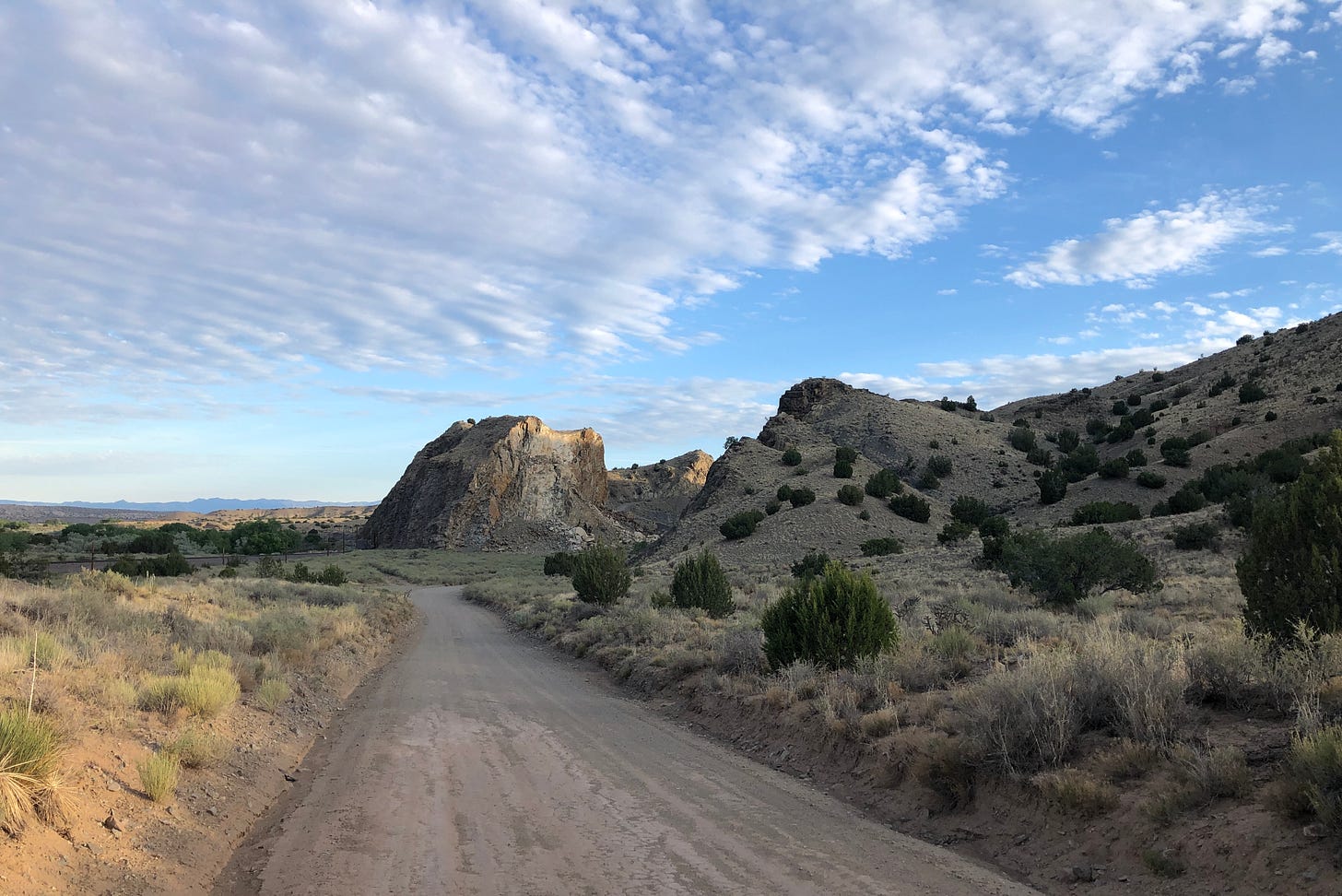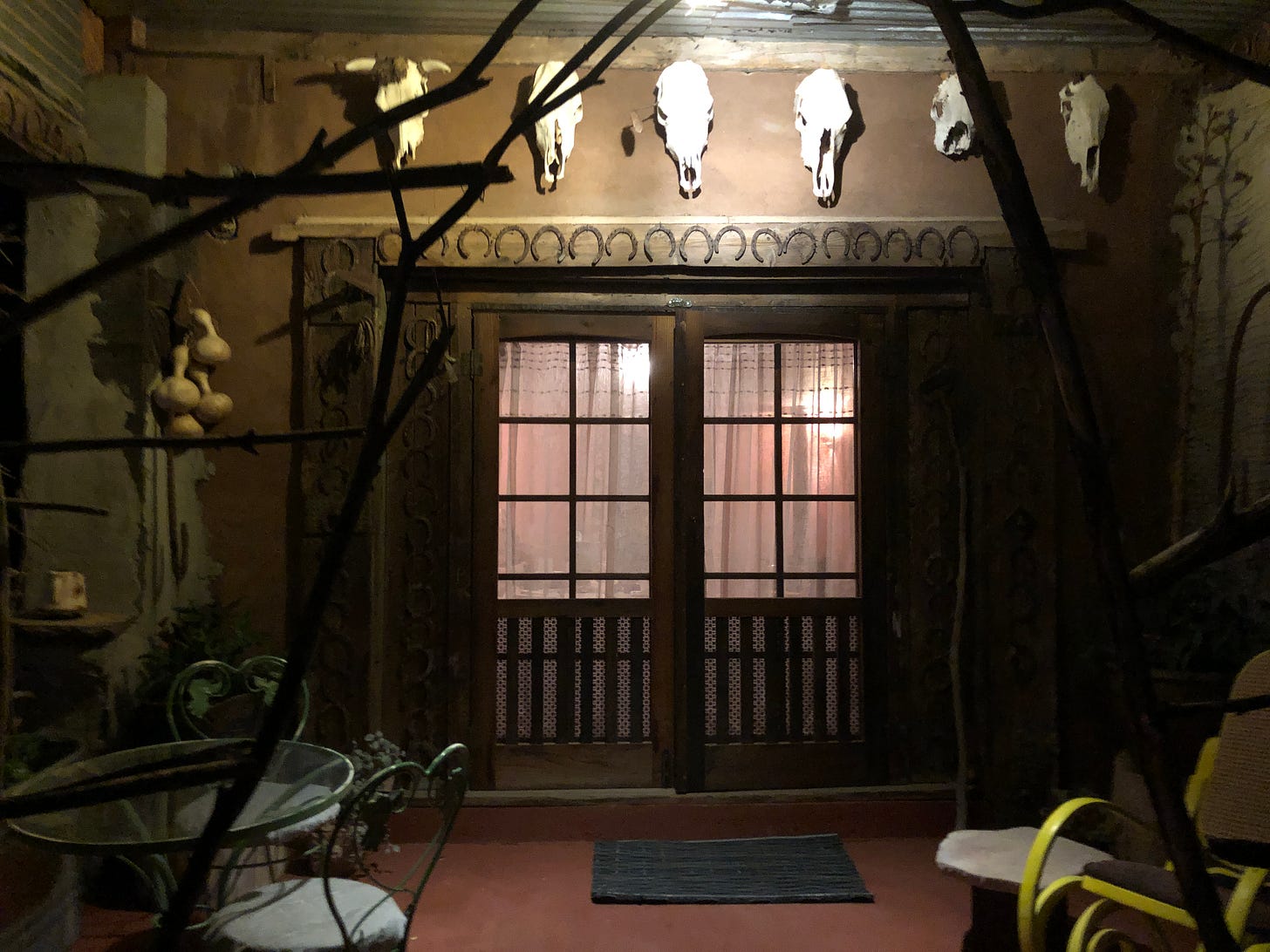It is called the Turquoise Trail and we were traveling on it at night. South from Santa Fe, somewhere far in the distance toward Shaggy Peak, a mountain that reaches more than 8200 feet above sea level, flashes of lightning silently fractured the southern blackness. The jagged white streaks racing from heaven to earth held onto the night long enough to illuminate what had been shrouded only seconds before, offering silhouettes of the barren hills. I had seen these New Mexico storms before. But my wife, who sat beside me in the passenger seat, had not. I was happy for her to see one, this unique desert weather that awakens the sky and its watchers like few other atmospheric wonders.
The trip to this rural stretch of desert was our first travel in more than fourteen months. The pandemic had seen to that. But oddly what we had chosen as our initial departure from the lockdown was not to rush to a crowded, lively beach or busy coastal town, but instead to softly go to a remote, and even lonely land in the Southwest.
An artist owned our casita and his work covered its walls—colors and images of open land and the vibrance of nature. Stone and cactus gardens surrounded us. A swing hung from a pinion tree. The mountains over the canyon held onto the horizon. We made morning coffee in an old Italian moka pot and omelettes with fresh eggs from the chickens in the coup just over the hill. In the early morning, I sat on the small porch to write in my journal. My wife found herself in the meditation garden with the owner’s dog, the welcoming Mr. Darcy. We hiked trails of rock and passed hundred-year-old mines to views of Waldo Mesa in silence so pure only the wind was there to remind us that we were alive. We collected desert stones, fossils, and tiny dead branches, and walked an old Catholic cemetery where crude headstones had crumbled with age and the souls of the dead seemed to welcome us to the arid and bleakly beautiful landscape.
We had traveled and we had arrived in a new place, both physically and spiritually. And we would not go home—more than 1200 miles from where we had journeyed—without having turned into different people. As Paul Theroux said, “When you go away and return . . . you never come back all the way.”
Travel—the right kind of travel—opens up the mind. This is not new thinking, of course. But there is no question that travel fuels the creative self. To do that you must be at least slightly uncomfortable in the journey. If you aren’t, it’s not travel. It’s vacation. A very different endeavor. Travel should leave a mark—a bruise or a kiss, and you should be branded by the experience.
The lightning continued as we drove. Each flash more dramatic than the last. Not scary, but simply beautiful, a soundly structured pattern yet profoundly wild. Lightning varies in its ancient symbolism. The Celts considered it sacred. To the Chinese it is a symbol of fertility. And to Native Americans it is a symbol of courage, power, and truth. The lightning above us could also undoubtedly be seen from the windows of the pueblo homes that dotted the land where we traveled. And on my right wrist, I wore a silver bracelet, purchased in Santa Fe and handmade by a father and son in Gallup. In the center was a gold image of a pueblo. I was honored to wear it, pleased that I was carrying it with me through the storm to the casita and then home the next day to Chicago, returning with the piece of a memory.
We turned onto the dirt road in the last hour of the day with only headlights guiding us to the casita door, the crackle of car wheels on the gravel entranceway the only sound. Light rain fell on the windshield. And the lightning, although long moved on, had left us grateful for what the desert had given us on this last night in New Mexico.







Beautifully written, as usual. Thank you